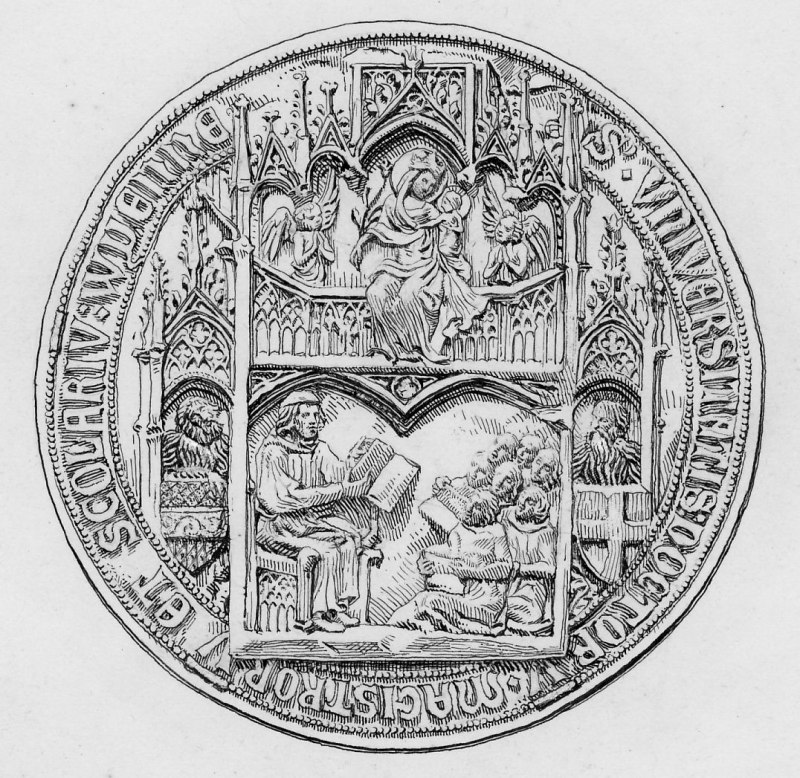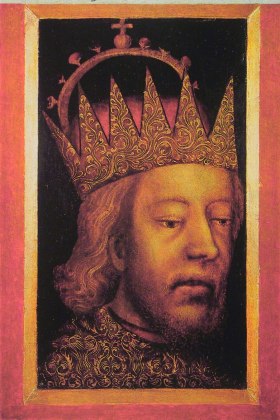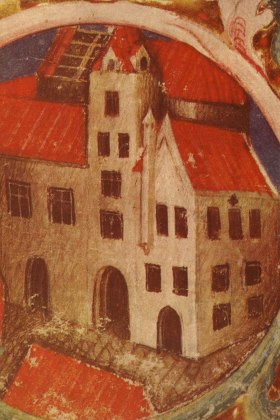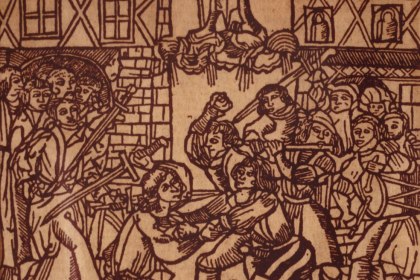The beginnings of the Alma Mater Rudolphina
Vienna’s development to a political, religious, cultural and economic center, as the capital city of a future Austrian kingdom were the backdrop to the lofty plans of a young Habsburg prince, Duke Rudolf IV. In view of his generous expansion of St. Stephen’s cathedral and the foundation of the University of Vienna he received the epithet “the Founder”.
The university’s founding with growing pains
On March 12, 1365, becoming the first university founder without a king’s crown, Duke Rudolf IV sealed the founding document for the Viennese House of Studies with the right to award doctorates in all “permitted” sciences following the example of the University of Paris. This foundation’s confirmation followed on June 18, 1365, by Pope Urban V. He however withheld his approval to a theological faculty, leaving the Viennese studium generale without the status of a full university. A reason for this restraint may have been an intervention by Emperor Charles IV, who feared competition for the University of Prague that he had founded in 1348. The economic and spatial requirements were also not met in 1365. Duke Rudolf should not learn of these problems. He died on July 27, 1365, at age 25, on a trip to Milan.
We know today that his institution still came into being, even if not all the provisions from the founding document were implemented. Apart from the theological studies, the university quarter which was planned to be built between the Hofburg and the Schottentor in the Herrengasse – called “Pfaffenstadt” (“priest city”) in the founding document – was not realized. Albert of Rickensdorf (†1390) became the first rector of the university. He was a theologian and natural scientist originally from Saxony, who had worked in Paris and later became bishop of Halberstadt. At first, the lectures were held in St. Stephen’s secondary school which was associated with the university.
Expansion to a full university
The founder’s brother, Duke Albert III, expanded the university in 1384: He added the Faculty of Theology and had it approved by Pope Urban VI, as well as inaugurated the first actual university building, the Duke’s College (collegium ducale), opposite the Dominican monastery in what is today the Postgasse. The free community of teachers and students, the universitas magistrorum et scholarium, formed the organizational superstructure of the general studies, which consisted of several academic bodies. These corporations formed the four faculties (theology, law, medicine, artists) as teachers’ organizations, led by Deans, the four academic nations (Natio Australium, Rhenensium, Ungarorum, Saxonum) as territorial organizations of the students, led by procurators, and the Duke’s College as an independent community with an elected prior at its head. The university’s collective head was the Rector Magnificus, who, until 1848, was elected by the four procurators. He presided over the university’s Consistory, which exercised the university’s special jurisdiction and became the university’s highest administrational board. Other members of the Consistory were the dean of St. Stephen’s cathedral as the university chancellor, and the Landesfürst’s (prince’s) superintendent, who was responsible for the endowments, as well as the prior of the Duke’s College.
The Great Western Schism (1378-1417) facilitated the influx of distinguished scientists who left the Parisian university. For example, Heinrich Heimbuche of Langenstein, a famous theologian and natural scientist (†1397) joined the university. He supported the university’s expansion and, together with other well-known teachers, motivated many students to come to Vienna.
University autonomy
On October 5, 1384, in an important step, Duke Albert III gave the university the right to give itself statutes. This right was regarded as the cornerstone of university autonomy, as was often mentioned in later discussions. As early as 1385 the university passed statutes for the university as a whole and in 1389 for the four faculties. These statutes included regulations for discipline, elections, academic officials’ duties, and rules for the study, exam and doctorate systems. Apart from the small income the university had been receiving from the Laa an der Thaya parish since 1366, the Duke mandated that the university would receive an additional yearly 680 pounds of Pfennige from the tolls at Emmersdorf an der Donau. In his testament, he decreed that the university should receive an “eternal pledge” of 800 pounds yearly from the toll at Ybbs, which his nephew, Duke William, confirmed by document in 1405. With this, the University of Vienna’s founding phase was completed.
The oldest continually existing university in the German-speaking world owes its establishment and its legal and economic security to this founding and constitutional phase.
-

Herzog Rudolf IV. knieend mit dem österreichischen Bindenschild
Glasgemälde in der Kirche Maria am Gestade, um 1360.
-
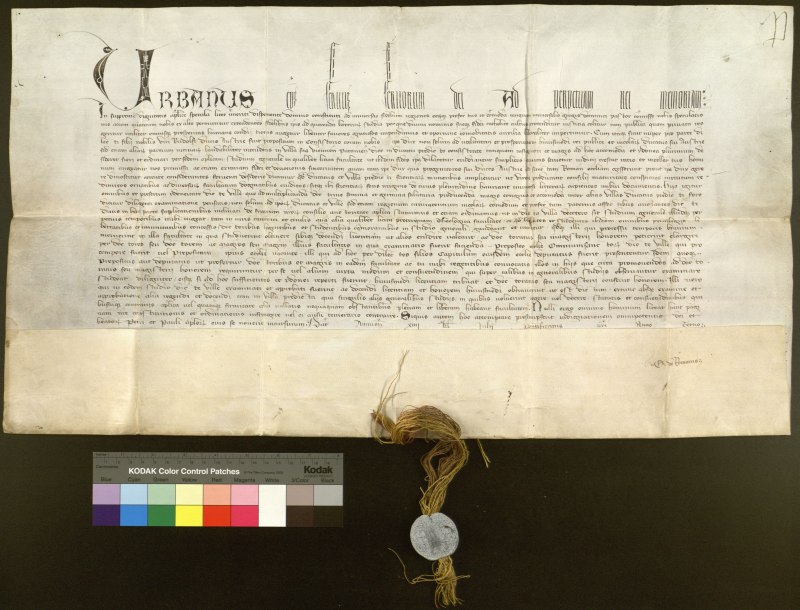
Papst Urban V. erteilt die Zustimmung zur Errichtung der Wiener Universität („Päpstlicher Stiftbrief“), 1365
Papst Urban V. erteilt die Zustimmung zur Errichtung der Wiener Universität (jedoch mit Ausnahme der theologischen Fakultät) und zur Verleihung der...
Zuletzt aktualisiert am 03/05/24
-
Rudolf IV. (Habsburg), Herzog von Österreich, Beiname „der Stifter“
1.11.1339–27.7.1365 -
Albert (Albrecht) von Rickmersdorf (Albert von Sachsen)
14th Cent.–8.7.1390 -
Heinrich von Langenstein
–11.2.1397 -
Albrecht III. (Habsburg), Herzog von Österreich
1349–29.8.1395

